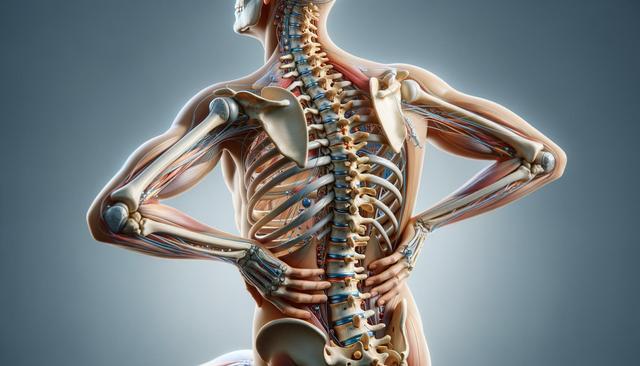What Is Spinal Decompression Therapy?
Spinal decompression therapy is a non-invasive method aimed at relieving pressure on spinal discs and nerves. It involves gently stretching the spine using a traction table or a motorized device. This treatment is often used as part of a broader back pain relief treatment plan and seeks to promote natural healing by improving spinal alignment and disc health. Unlike surgical procedures, non-surgical spinal decompression does not involve incisions or lengthy recovery periods.
By creating negative pressure within the disc space, this therapy helps retract bulging or herniated discs, which can relieve pressure on nerves and other spinal structures. It’s commonly used for conditions such as:
- Herniated or bulging discs
- Degenerative disc disease
- Facet syndrome
- Spinal stenosis
- Sciatica
For individuals seeking chronic back pain solutions, spinal decompression offers a gentle yet targeted approach that supports overall back health without the risks associated with surgery.
How Spinal Decompression Works in Practice
Understanding how spinal decompression works can help patients feel more confident in choosing this therapy. The process typically begins with a comprehensive physical assessment to determine the root cause of the pain. Based on the evaluation, a tailored treatment plan is developed. The patient lies on a specialized table while a harness is fitted to the pelvis and torso. Controlled traction is then applied to gently stretch the spine.
This stretching reduces pressure on the spinal discs, encouraging the retraction of misplaced disc material and promoting the circulation of nutrients, oxygen, and fluids that are essential for healing. A single session may last 30 to 45 minutes, and a full course of treatment generally includes multiple sessions over several weeks.
The effectiveness of spinal decompression therapy varies depending on the individual’s condition and consistency in following the treatment plan. However, many patients experience noticeable improvement, especially when combined with physical therapy for back pain and lifestyle changes.
Conditions That May Benefit from Spinal Decompression
Several spinal and nerve-related conditions can respond well to spinal decompression therapy. Among these, sciatica decompression is one of the most common applications. Sciatica, characterized by pain radiating from the lower back down the leg, often results from compressed spinal nerves. Decompression can relieve this pressure and reduce inflammation.
Other conditions that may benefit include:
- Chronic lower back pain
- Neck pain related to disc issues
- Pinched nerves
- Post-surgical back pain (in some cases)
It’s important to note that spinal decompression may not be suitable for everyone. Individuals with fractures, tumors, advanced osteoporosis, or abdominal aortic aneurysms should avoid this treatment. Always consult a healthcare provider to determine eligibility and explore alternative chronic back pain solutions if necessary.
The Role of Physical Therapy and Lifestyle Adjustments
While spinal decompression therapy can significantly alleviate discomfort, integrating physical therapy for back pain into the overall treatment plan enhances long-term results. Customized exercise programs help strengthen weakened muscles, improve flexibility, and stabilize the spine. These exercises also reduce the likelihood of future injury or recurrence of symptoms.
In addition to physical therapy, lifestyle adjustments play a crucial role in maintaining spinal health. Consider the following supportive practices:
- Maintaining a healthy weight to reduce spinal pressure
- Improving posture through ergonomic workstations
- Engaging in low-impact activities like swimming or walking
- Using proper body mechanics when lifting heavy objects
When combined with these proactive measures, spinal decompression becomes part of a holistic strategy for managing and preventing back pain. The goal is not only immediate relief but also sustained spinal well-being.
Choosing Non-Surgical Spinal Decompression Wisely
Deciding whether non-surgical spinal decompression is right for you depends on your specific health condition and goals. This therapy is often recommended for individuals who have not found relief through conventional treatments like medications or standard physical therapy. It offers a gentle, structured approach that avoids the risks and recovery time associated with surgical alternatives.
Before beginning treatment, it’s essential to have a thorough discussion with your healthcare provider. Diagnostic imaging, such as an MRI or X-ray, may be used to confirm the source of discomfort and guide the therapy plan. A qualified practitioner will also review your medical history to ensure spinal decompression is a safe and viable option for you.
Those who adhere to their treatment sessions and follow post-therapy recommendations often report a marked reduction in symptoms and improved quality of life. While results vary, spinal decompression therapy has become a valued part of the toolbox for addressing chronic and acute spinal conditions.
Conclusion: A Comprehensive Approach to Spinal Wellness
Spinal decompression therapy offers a promising avenue for individuals seeking non-invasive, effective options to manage back and nerve pain. Especially for those exploring chronic back pain solutions beyond medications or surgery, this method provides targeted relief with minimal risk. When combined with physical therapy for back pain and healthy lifestyle habits, it supports lasting recovery and improved daily function.
Whether dealing with sciatica, disc issues, or general lower back discomfort, understanding how spinal decompression works and consulting with a qualified practitioner can be the first step toward a more comfortable, active life.




Leave a Reply